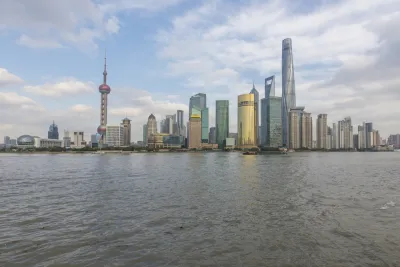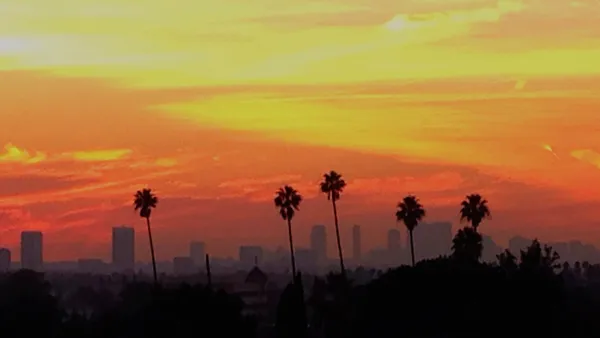City life happens at street level. But some of our most iconic images of cities are focused hundreds, or even thousands, of feet in the air. Our streetscapes are the worse off for it.

"Before the invention of the camera, we could behold the world only through our own eyes. That which pleased us and functioned for us took place in fine detail. There was no distinction between sight, touch, and presence. Anything we could see, we could probably touch. Anything we could touch was by definition within our presence, ours to behold, control, and, cherish."
"However you spin it, the rack at the drug store holds all sorts of images: barnyard animals, points of interest, thinly veiled advertisements for tourist traps. But if the rack is in a city, one type of image is bound to dominate: that of the skyline. From Manhattan and Los Angeles to Wichita and Toledo, there is, essentially, no American city that is not defined by its skyline—that is to say, by a photograph of its skyline."
"Skylines appear on nearly every city’s website. They adorn the backdrop for nearly every local newscast. They accompany promotional materials and magazine articles. Their synecdochal power is nearly limitless. The Midwestern massif that culminates in the Willits Tower is to Chicago what the telephone booth is to London. Peachtree Plaza and its fellow Portmans are to Atlanta what the sushi bar is to Tokyo. Even the most unremarkable skylines—Des Moines, Fresno, Rochester, whatever—represent their respective cities for lack of imagination or of anything more distinctive to portray."
"The world has plenty of impressive skylines: Dubai, Kuala Lumpur, Shanghai, Shenzhen, Toronto, and so on. Even London now has a skyline, with the addition of the Shard. But most are impressive only superficially, more for the capital that went into them than for their aesthetic merit. Many of these skyscrapers seem to be competing with each other for some unnamed award for garishness."
FULL STORY: How Photography Profoundly Reshaped Our Ideas About Cities

Analysis: Cybertruck Fatality Rate Far Exceeds That of Ford Pinto
The Tesla Cybertruck was recalled seven times last year.

National Parks Layoffs Will Cause Communities to Lose Billions
Thousands of essential park workers were laid off this week, just before the busy spring break season.

Retro-silient?: America’s First “Eco-burb,” The Woodlands Turns 50
A master-planned community north of Houston offers lessons on green infrastructure and resilient design, but falls short of its founder’s lofty affordability and walkability goals.

Test News Post 1
This is a summary

Analysis: Cybertruck Fatality Rate Far Exceeds That of Ford Pinto
The Tesla Cybertruck was recalled seven times last year.

Test News Headline 46
Test for the image on the front page.
Urban Design for Planners 1: Software Tools
This six-course series explores essential urban design concepts using open source software and equips planners with the tools they need to participate fully in the urban design process.
Planning for Universal Design
Learn the tools for implementing Universal Design in planning regulations.
EMC Planning Group, Inc.
Planetizen
Planetizen
Mpact (formerly Rail~Volution)
Great Falls Development Authority, Inc.
HUDs Office of Policy Development and Research
NYU Wagner Graduate School of Public Service


























